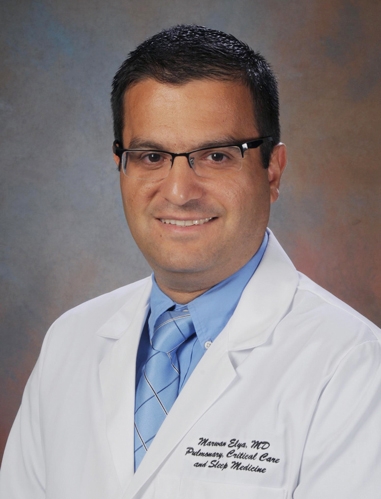An Education in Hemorrhagic Stroke

Marwan Elya, MD
McLeod Critical Care Specialists
A Hemorrhagic stroke is a bleeding that suddenly interferes with the brain’s ability to function. This type of stroke happens when a blood vessel bursts, causing bleeding into the brain. Damage occurs as the blood presses on the brain cells. Hemorrhagic strokes account for approximately 13 percent of all stroke cases.
Risk Factors
The most common cause of a stroke is uncontrolled high blood pressure. The following medical history and habits will also put someone at a higher risk for stroke:
- High levels of LDL cholesterol (bad cholesterol)
- Smoking
- Diabetes
- Family history
- History of heart disease or stroke
- A previous brain aneurysm
- High levels of stress and anxiety
In addition, there are risk factors that are specific to Hemorrhagic stroke which include:
- Having a bleeding disorder
- Experiencing a head injury and physical trauma
- Using blood-thinning medication
- A cerebral brain aneurysm
A brain aneurysm is a bulging area within the wall of an artery that supplies blood and oxygen to the brain. As the blood pressure in the artery pushes on this protruding spot the danger is that it can continue to balloon out with a risk of rupturing.
If it bursts, uncontrolled bleeding may occur. The rupture of an aneurysm often occurs without warning and can very quickly turn into a life-threatening situation. Immediate emergency treatment is vital to reduce the risk of permanent, severe neurological damage or death.
Symptoms
Symptoms of Hemorrhagic stroke may start suddenly or develop over several days. Signs that a person may be experiencing a stroke include:
- A sudden, severe headache
- Vision changes
- Loss of balance or coordination
- Inability to move
- Numbness or weakness on one side of the body
- Seizures
- Loss of speech or difficulty understanding speech
- Confusion
Treatment
At the Emergency Department, a head CT scan will be performed to help distinguish between an Ischemic stroke or a Hemorrhagic stroke. It is important to know which type of stroke it is to be able to determine the treatment plan.
Immediate treatment of Hemorrhagic stroke is essential. The emergency treatment focuses on finding the cause of the bleeding and controlling it.
For patients who take a blood thinning medication to prevent blood clots they may be given medications to counteract the blood thinner’s effects.
Surgery known as a craniotomy, performed by a Neurosurgeons, may be necessary to repair blood vessels or seal an aneurysm and prevent further bleeding.
A procedure available at McLeod Regional Medical Center is Endovascular Coiling. Performed by an Interventional Neuroradiologist, Endovascular Coiling treats aneurysms from inside the blood vessel. Small coils are inserted into the aneurysm through the arteries that run from the groin to the brain. The coils are made of soft platinum metal and shaped like a spring. They are very small and thin with the largest about twice the width of a human hair. These coils stop the blood from flowing into the aneurysm.
Depending on the size of the aneurysm more than one coil may be needed to completely seal off the aneurysm.
Rehabilitation
The effects of the stroke depend on which area of the brain was damaged. In many cases stroke survivors need to relearn the skills they lost from the damage caused by the stroke through rehabilitation. The goal of rehabilitation is to help stroke survivors regain their independency and allow them to have the best possible quality of life.
It is not always possible to prevent a Hemorrhagic stroke, but avoiding smoking, getting regular exercise, blood pressure control and following a healthy diet may put you on the right track.
Dr. Marwan Elya is a McLeod Critical Care Specialist Board-Certified in Critical Care Medicine, Internal Medicine, Pulmonary Disease and Sleep Medicine. Dr. Elya is part of the team caring for stroke patients at McLeod Regional Medical Center.
-
McLEOD REGIONAL MEDICAL CENTER FLORENCE
843-777-2000 -
McLEOD DARLINGTON
843-777-1100 -
McLEOD DILLON
843-774-4111 -
McLEOD LORIS
843-716-7000 -
McLEOD SEACOAST
843-390-8100 -
McLEOD CHERAW
843-537-7881 -
McLEOD CLARENDON
803-433-3000



-
McLEOD REGIONAL MEDICAL CENTER FLORENCE
843-777-2000 -
McLEOD DARLINGTON
843-777-1100 -
McLEOD DILLON
843-774-4111 -
McLEOD LORIS
843-716-7000 -
McLEOD SEACOAST
843-390-8100 -
McLEOD CHERAW
843-537-7881 -
McLEOD CLARENDON
803-433-3000
 Find a Doctor
Find a Doctor  Locations
Locations  Services
Services